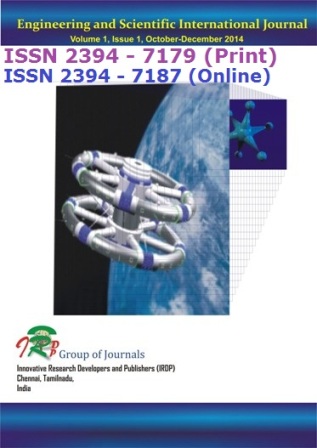
Engineering and Scientific International Journal
Yazarlar: A.D. Oguizu, J.O. Nwagwu
Konular:-
DOI:10.30726/esij/v8.i2.2021.82014
Anahtar Kelimeler:School Age Children,Iodine Status,Abia State,Nigeria.
Özet: Background: Iodine deficiency disorders have continued to be a significant health problem in some Nigerian communities despite universal salt iodization. Objective: This study was designed to assess the iodine status of school age children (6-12 years) in Umuahia South LGA of Abia State, Nigeria. Methods: A total of 414 school children were studied. Urine samples were obtained from 84 school children, 30 males and 54 females. The background and socio-economic information, food habit and dietary intake of the respondents were determined using validated questionnaires. Urinary iodine concentration analysis, using Sandell-Kolthoff reaction was used to determine the iodine status of the children. Chi-square was used to determine the relationship between urinary iodine status of the children and the socio-economic characteristics of their parents. Results: More than half (58.7%) of the children were females while 40.5% were males. About a quarter of the children (40.1%) were 9-10 years, 23.4% were 11-12 years while 36.5% were 6-8 years. Most of the respondents (72.2%) were aware of iodized salt; 14.3% heard about iodized salt from friends, 41.8% heard from the media while 13% heard about iodized salt from the market. Majority of the respondents (94.4%) claimed they consume iodized salt while 4.9% said they use salts that were measured in cups which was not iodized salt. The study revealed that 54.3% of the school children had optimal iodine status while 35.7% had mild iodine deficiency which was higher in males (46.7%) than in females (29.6%). About 5.6% of the respondents had grade 1 goiter. There was a significant association (p< 0.05) between urinary iodine status of the school children and educational status of their fathers’, mothers’, parents’ occupation and income level of fathers. Conclusion: Nutrition education should be aimed at mothers, caregivers, and school children to promote consumption of iodine rich foods.